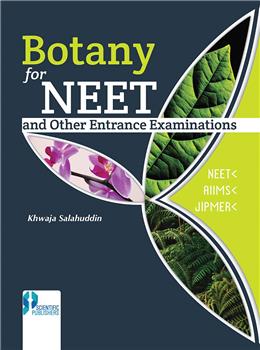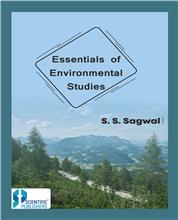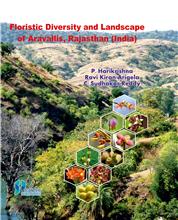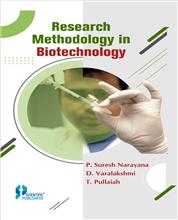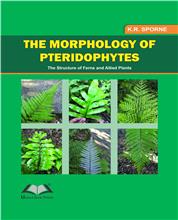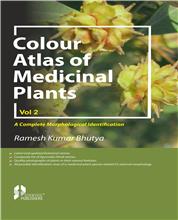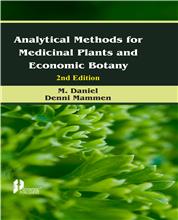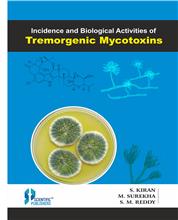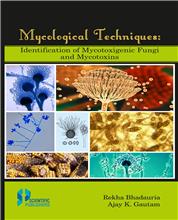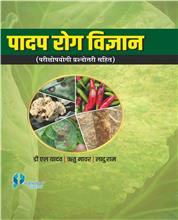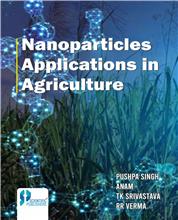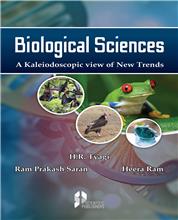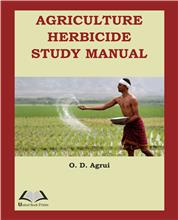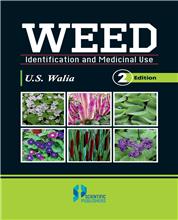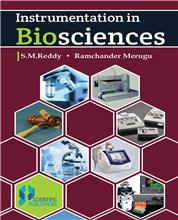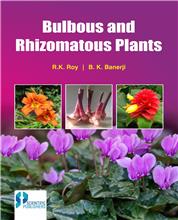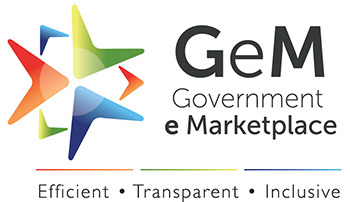1. The Living World
Properties of living organisms; Taxonomy: Types, Branches; Taxonomic category; Taxonomic hierarchy; Types of species; ICBN; Binomial nomenclature; Taxonomic aids; Identification kits; Short type questions and Long type questions
2. Biological Classification
Kingdom system of classification; Archaebacteria; Bacteria; Cyanobacteria; Protista; Fungi; Mycorrhiza; Lichen; Virus; (TMV and bacteriophage); Subviral particles (Virusoid, Viroid and Prion); Short type questions and Long type questions
3. Plant Kingdom
Algae; Bryophyta; Pteridophyta; Gymnosperms; Angiosperms; Classification of angiosperms: artificial, natural and phylogenetic systems; Short type questions and Long type questions
4. Morphology of Flowering Plants
Forms of plants, Root, Stem, Leaf, Inflorescence, Flower, Fruit, Seed; seed dormancy; seed germination; dispersal of fruit and seed; Description of families: Fabaceae, Solanaceae, and Liliaceae; Short type questions and Long type questions
5. Anatomy of Flowering Plants
Meristematic tissue: feature, types and theories; Permanent tissue: Simple permanent tissue (Parenchyma, Collenchyma, Sclerenchyma), Complex permanent tissue (Xylem, Phloem), Tissue system: Epidermal, Ground, Vascular and Secretory tissue systems; Anatomy of root; Anatomy of stem; Anatomy of leaf; Secondary growth in dicot root; Secondary growth in dicot stem; Differentiation of wood; Bark; Lenticel; Annual rings; Short type questions and Long type questions
6. Cell -The Unit of Life
Discovery; Organisation of cell; Features of cell; Difference between prokaryotic cell and eukaryotic cell; difference between plant and animal cell; Bacterial cell; Gram staining method; Cell wall; Protoplasm; Vacuole; Plasma membrane; Cytoplasm; Mitochondria; Plastid; Endoplasmic reticulum; Golgi apparatus; Ribosome; Microbodies (Lysosome, Peroxisome, Glyoxysome, Sphaerosome); Centriole; Cilia and Flagella; Cytoskeletons (Microfilaments, Microtubules and Intermediate filaments); Nucleus; Chromosome; Karyotype; Idiogram; Ergastic substances; Short
type questions and Long type questions
7. Cell Cycle and Division
Cell cycle; Types of cell division: Amitosis, Mitosis, Meiosis; Differences between mitosis and meiosis; Short type questions and Long type questions
8. Transport in Plants
Means of transport; Types of transport: Simple diffusion, Facilitated diffusion, Active transport; Plant-water relations: Osmosis, Osmosis in terms of potential, Plasmolysis, Imbibition; Absorption of water; Ascent of sap; Transpiration; Guttation; Translocation of solutes; Short type questions and Long type questions
9. Mineral Nutrition
Evidences: Hydroponics and Aeroponics; Classification of essential elements; Types of essential elements: Micronutrients and meganutrients; Absorption of minerals; Transport of minerals; Nitrogen fixation: Physico-chemical and Biological nitrogen fixation; Short type questions and Long type questions
10. Photosynthesis in Higher Plants
Landmarks in photosynthesis; Photosynthetic pigments; Pigment systems; Light reaction; Chemiosmosis; Dark reaction; C4 Cycle; Photorespiration; Law of limiting factors; Factors affecting photosynthesis; Short type questions and Long type questions
11. Respiration in Plants
Types of respiration; Glycolysis; Fermentation; Pyruvate oxidation; Krebs cycle; Electron transport chain; Oxidative phosphorylation; ATP; Inhibitors; Factors affecting respiration; Respiratory quotient; Short type questions and Long type questions
12. Plant Growth and Development
Development; Growth; Plasticity; Phytohormones: Auxin, Gibberellin, Cytokinin, Abscisic acid and Ethylene; Physiology of flowering: Photoperiodism, Vernalisation; Senescence; Short type questions and Long type questions
13. Reproduction in Organisms
Vegetative reproduction, Asexual reproduction, Sexual reproduction; Short type questions and Long type questions
14. Sexual Reproduction in Flowering Plants
Parts of flower; Development of male gametophyte: Structure of anther, Microsporogenesis, Microgametogenesis; Development of female gametophyte: Development of ovule, Megasporogenesis, Megagametogenesis; Pollination; Pollen-Pistil interaction; Fertilisation; Double fertilisation; Endosperm; Embryogenesis: Development of dicot embryo and monocot embryo; Polyembryony; Apomixis; Parthenocarpy; Short type questions and Long type questions
15. Principles of Inheritance and Variation
Early theories of heredity; Variation; Mendelian inheritance; Exceptions to Mendelism: Incomplete dominance, Codominance, Non-allelic interactions, Lethality, Pleiotropy, Multiple alleles, Polygenic inheritance, Linkage; Crossing over; Cytoplasmic inheritance; Chromosomal theory of inheritance; Sex determination; Mutation: features, types and molecular mechanism; Chromosomal aberration: Structural and Numerical; Sex linked inheritance; Genetic disorders: Sex-linked and autosomal; Disorders due to genetic incompatibility; Chromosomal abnormalities:
Autosomal and sex chromosomal; Approaches to study human genetics: Population genetics and Pedigree analysis; Examples; Short type questions and Long type questions
16. Molecular Basis of Inheritance
Genetic material; Evidences in favour of DNA: Transformation and Blender’s experiment; Structure of DNA, Difference between DNA and RNA; Packaging of DNA double helix; Replication of DNA; RNA world hypothesis; Types of non-genetic RNA: mRNA, rRNA and tRNA; Concept of gene; Types of gene; Genetic code; Protein synthesis: Transcription and translation; Regulation of gene expression: Inducible operon and repressible operon; Human genome Project, DNA finger printing; Short type questions and Long type questions
17. Strategies for Enhancement in Food Production
Plant breeding: Conventional techniques and Modern techniques; Green revolution; Plant breeding for insect resistance; Plant breeding for disease resistance; Plant breeding for improved quality (biofortification); Anti-nutritional factors; Single cell protein; Tissue culture; Protoplast fusion (Somatic hybridisation); Short type questions and Long type questions
18. Microbes in Human Welfare
Roles of microbes in household products; Roles of microbes in industrial products (brewery, production of enzymes, organic acids, vitamins, amino acids, dextran, steroids, antibiotics); Roles of microbes in sewage treatment; Roles of microbes in biogas production; Biofertilisers, Green manuring; Biocontrol; Short type questions and Long type questions
19. Biotechnology: Principles and Processes
Branches; Genetic engineering: Revolutions, Achievements, Tools (enzymes, vectors, host organism, bioreactor); Procedures: Different steps; Agarose gel electrophoresis, Polymerase chain reaction; Direct gene transfer; Insertional inactivation; Short type questions and Long type questions
20. Biotechnology and its Applications
Applications of biotechnology (Roles in agriculture, Roles in medicine, Roles in industries, Roles in animal biotechnology and Roles in environment); Hazards of genetic engineering; Safeguards of genetic engineering; Initiatives of Govt. of India; Biosafety issues; Biopatents; Short type questions and Long type questions
21. Organisms and Population
Branches of ecology; Levels of organisation; Ecological factors: temperature, water, light, soil, humidity, wind, pH, atmosphere, topographic factors; Response to abiotic factors; Biotic factors, adaptations, Population: features, Population interactions; Short type questions and Long type questions
22. Ecosystem
Types of ecosystem; Components of ecosystem; Functional components: Productivity,
decomposition, Energy flow, Food chain, Food web, Trophic level, Ecological pyramids;
Biogeochemical cycles: Carbon cycle, Sulphur cycle, Phosphorus cycle; Plant succession;
Ecosystem services; Short type questions and Long type questions
23. Biodiversity and Conservation
Introduction, Levels of biodiversity, Types of ecological diversity; Patterns of biodiversity; Biodiversity in India, IUCN; Conservation approaches; conservation strategy; Short type questions and Long type questions
24. Environmental Issues
Pollution, Types of pollutants; Air pollution; Euro norms; Water pollution; Radioactive pollution; Soil pollution; Green house effect; Ozone layer and depletion; Agrochemicals; Solid waste management: Afforestation; Short type questions and Long type questions.
